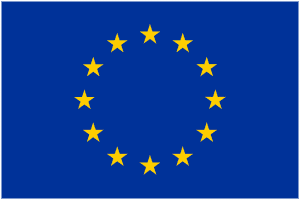The Finnish Industrial WW guide
The predecessor of the attempt to better systemise the bio-based input streams, is the industrial WW guide of the Better Efficiency for Industrial Sewage Treatment (BEST) project, funded by the Interreg Baltic Sea Region Programme 2014-2020 (Finnish Industrial Wastewater guide, 2022). This industrial WW guide describes the collaboration model between municipalities, water utilities and industrial enterprises. This guide also reports the legislation applied to industrial WW. The regulatory framework and the WW disposal limits are part of the questions the Industrial WW producers are subjected to as part of their interview in the WalNUT project. As part of this guide, the characteristics of industrial WW (i.e. bio-based input streams) are presented regarding:
Food industry
- Dairy industry
- Slaughterhouses and meat processing plants
- Breweries and the soft drink industry
- Potato and root vegetable processing plants
- Bakeries
- Fish processing plants
Metal industry
- Surface finishing plants
- Steel pickling plants
- Phosphating process plants
- Anodising plants
- Shipyards
Chemical industry
- Paint and coatings industry
- Rubber industry
- Explosives factory and blasting sites
- Pharmaceutical production plants
- Enzyme production plants
- Sulphuric acid production plants
- Printing ink factories
Printing industry
- Offset printing plants
- Silk-screen printing plants
Forest industry
- Pulp and paper industry
Textile and leather industry
Textile printing
- Tanneries
- Laundries
Manufacturing of mineral products
- Glassworks and fibreglass plants
- Concrete plants
Transport
- Ports
- Waste water from airports
- Energy production
Waste management
- Waste treatment plants and landfills
- Composting plants and facilities
- Biogas plants
- Sludges from septic tanks and cesspits
Services
- Hospitals
- Dental clinics
- Service stations and garages
- Restaurants
- Waste grinders
- Water of public indoor swimming pools
Construction
- Construction sites
- Remediation of contaminated soils
Other
- Laboratories
- Art workshops and hobby clubs
- Waste water from animal shelters
- Stormwater
- Sludge generated by other water utilities
This also acts as an exhaustive list for the better systemisation of bio-based input streams and their characteristics that render them potential candidates for nutrient recovery practices can be accessed in the (Finnish Industrial Wastewater guide, 2022).
References
Finnish Industrial Wastewater guide. (2022, June). Retrieved from Finnish Water Utilities Association: https://bestbalticproject.eu/wp-content/uploads/2018/09/Finnish_Industrial_Wastewater_Guide.pdf
Download File
Download the file here.

